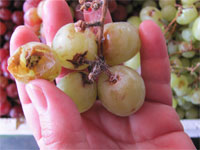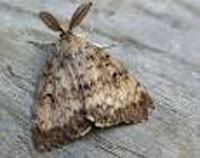- Agricultural Commissioner
- About Us
- FAQs
- Funding
- How We Are Funded
- County General Fund
- Pesticide Use Reporting
- Oak Death Inspection
- Pierce’s Disease Control
- Pierce’s Disease Nursery Treatments
- Organic Crops Program
- Seed Inspection
- Nursery Inspection
- Farmers Market Inspection
- Land Use Planning
- Pest Control Business Registrations
- Citrus Maturity Inspection
- Programs
- How We Spend Our Time
- Pest Detection and Eradication
- Citrus Inspection and Commodity Regulation
- Pierce’s Disease Control
- Pest Exclusion and Plant Quarantine
- Seed Inspection
- Nursery Inspection
- Farmers Market Inspection
- Egg Quality Control
- Apiary Inspection
- Crop Statistics
- Pesticide Use Enforcement
- NPDES MS4 Permit Compliance Inspections
- Land Use Planning
- Toland Landfill Project
- Weights & Measures
- FORMS/DATA
- Notices
- APAC
- SALC GRANT
- Crop Reports
- Contact Us
- Agricultural Commissioner
- About Us
- FAQs
- Funding
- How We Are Funded
- County General Fund
- Pesticide Use Reporting
- Oak Death Inspection
- Pierce’s Disease Control
- Pierce’s Disease Nursery Treatments
- Organic Crops Program
- Seed Inspection
- Nursery Inspection
- Farmers Market Inspection
- Land Use Planning
- Pest Control Business Registrations
- Citrus Maturity Inspection
- Programs
- How We Spend Our Time
- Pest Detection and Eradication
- Citrus Inspection and Commodity Regulation
- Pierce’s Disease Control
- Pest Exclusion and Plant Quarantine
- Seed Inspection
- Nursery Inspection
- Farmers Market Inspection
- Egg Quality Control
- Apiary Inspection
- Crop Statistics
- Pesticide Use Enforcement
- NPDES MS4 Permit Compliance Inspections
- Land Use Planning
- Toland Landfill Project
- Weights & Measures
- FORMS/DATA
- Notices
- APAC
- SALC GRANT
- Crop Reports
- Contact Us
High Risk Inspection



The Department of Food and Agriculture contracts with the Agricultural Commissioner to conduct inspections of incoming shipments of agricultural products in high risk pathways. These are locations that pose a higher than normal risk for the introduction of exotic pests into the state or the county. Inspectors go to United Parcel Service (UPS) and Federal Express (FedEx) several mornings a week and inspect packages containing agricultural products from certain high risk areas. High risk areas include Hawaii, and several states in the southeastern United States. They also inspect packages that are suspected of containing agricultural products but have no certification or other indication that they have been inspected at origin.
One of the common ways injurious pests enter Ventura County, is because someone ships an infested plant, fruit or vegetable to a family member or a friend. When the package is received and the article is found to contain pests the recipient throws it out and the pests multiply and infest nearby agricultural crops or urban properties. Pests can also travel easily on plants and plant parts shipped from uncertified and unlicensed nurseries and plants offered for sale at swap meets and other open air markets, or transported in vehicles or luggage. Inspectors from the Agricultural Commissioner’s office inspect incoming plants at nurseries, farmer’s markets, and swap meets to check for the presence of pests not occurring in this area. As the state of California experiences budget shortfalls the usual points of entry at the state border are no longer staffed with inspectors, so this program at the local level becomes one of the main lines of defense against injurious pests.
Household articles and recreational vehicles are inspected to prevent the spread of Gypsy Moth. The Gypsy Moth is a pest that occurs in the eastern United States that feeds on hardwood trees of all kinds and is often transported into the state on outdoor furniture and motor homes. This moth can decimate hardwood forests and Oak woodland. An infestation of Gypsy Moth was detected and eradicated in the Upper Ojai area in 2008. This program is also a part of the Pest Exclusion and Plant Protection Division.



